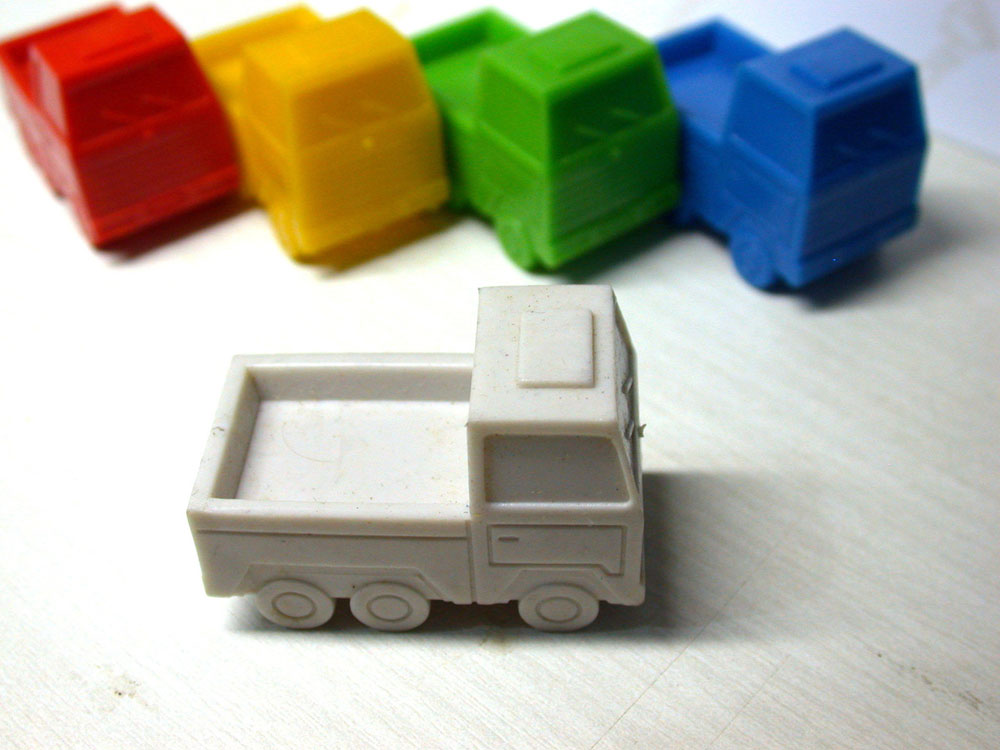These are tough economic times. When you’re looking for ways to save your “green”, why not consider “Going Green”? Going Green not only saves our environment, but can save fuel, resources and money. Whether you’re a fleet manager, a truck driver, work in the maintenance shop or the warehouse, you can have a significant impact on reducing costs and improving your company’s bottom line by exploring and implementing Go Green practices. Find out to reduce emissions and improve fuel economy in your trucks, RVs and tractor trailers.
Step 1
Maintain proper tire inflation. Proper tire air inflation pressure saves fuel and prevents uneven tire wear. It’s especially important to monitor tire pressure on trucks between loading and unloading. We offer several high-quality gauges to regularly check tire air pressure on your trucks, including an Angled Dual Foot Gauge to make it easier. Learn more about the importance of Proper Tire Air Inflation Pressure using the additional resources below.
Step 2
Minimize idling. Idling wastes fuel, creates pollution and increases the wear and tear on your engine. According to the U.S. Environmental Protection Agency, idling can cost up to $6000 in fuel per truck each year. Also, a growing list of states and municipalities now have anti-idling laws designed to protect the environment and save fuel. Reducing your idling time and using alternative technologies to stay comfortable during long hauls can save you money.
Step 3
Use your fuel wisely. What you do as a driver can not only help you get the most out of your fuel dollars, but also have a positive impact on overall fuel economy We offer a Fuel Management Online Training Course with interactive tips and techniques for significant fuel savings. Topics include Engine Selection, Gear Ratios, Aerodynamics and the latest information on new technologies.
Step 4
Maintain vehicle filters. When your truck is breathing clean air, you’re saving money. Proper vehicle filter maintenance improves fuel mileage, so replace air filters and other maintenance items according to the manufacturer’s schedule to keep contaminants out.
Step 5
Install air restriction gauges. Filters do not clog based on time or mileage; they clog based on the air quality in your vehicle’s operating environment. If you’re driving your truck in a high-pollution area, you may need to replace your filters more frequently than stated in the manufacturer’s schedule. An air restriction gauge can prevent replacing an air filter too soon yet ensure that it is replaced before efficiency is affected.
Step 6
Use Long Life lamp bulbs. Long Life and Fleet Service lamp bulbs can offer up to double or triple the life of a standard bulb. This prevents the waste of discarded units and many hours of labor changing lamp bulbs, too. There are many Long Life replacements for most popular sealed beams and miniature bulbs.
Step 7
Install light timers. Light timers will reduce battery drain and bulb waste, not to mention the hassle and expense of buying replacement bulbs so often. A dome light timer will automatically turn dome lights off after 2 hours.
Step 8
Replace shock absorbers only when needed. Misdiagnosed shock absorbers are often replaced before they actually fail. It’s important to know How To Inspect Shock Absorbers to properly diagnose problems.
Step 9
Use fuel additives. Fuel additives like Howes Power Kleaner remove water from your fuel system, reduce exhaust emissions and improve fuel economy. This small cost up front can save you money down the line.
Step 10
Use fluorescent and LED lighting. Fluorescent lamps and LEDs are more efficient than standard tungsten bulbs. Whether it’s overhead lighting, a work light, or a flashlight, there are many fluorescent work lights, rechargeable LED flashlights and replacement bulbs to meet your needs.
Step 11
Maintain facilities. Any building can Go Green and become cost-efficient. Things like caulking windows and doors, having heating systems tested and professionally cleaned and managing your water use can have a positive effect on your energy costs.
Step 12
Pay attention to security. Nothing can adversely affect your bottom line than having your cargo hijacked, your truck stolen or your shop or warehouse broken into. When it comes to security, prevention is key. Find a Security Awareness online training course to help you and your crew watch for security risks.







